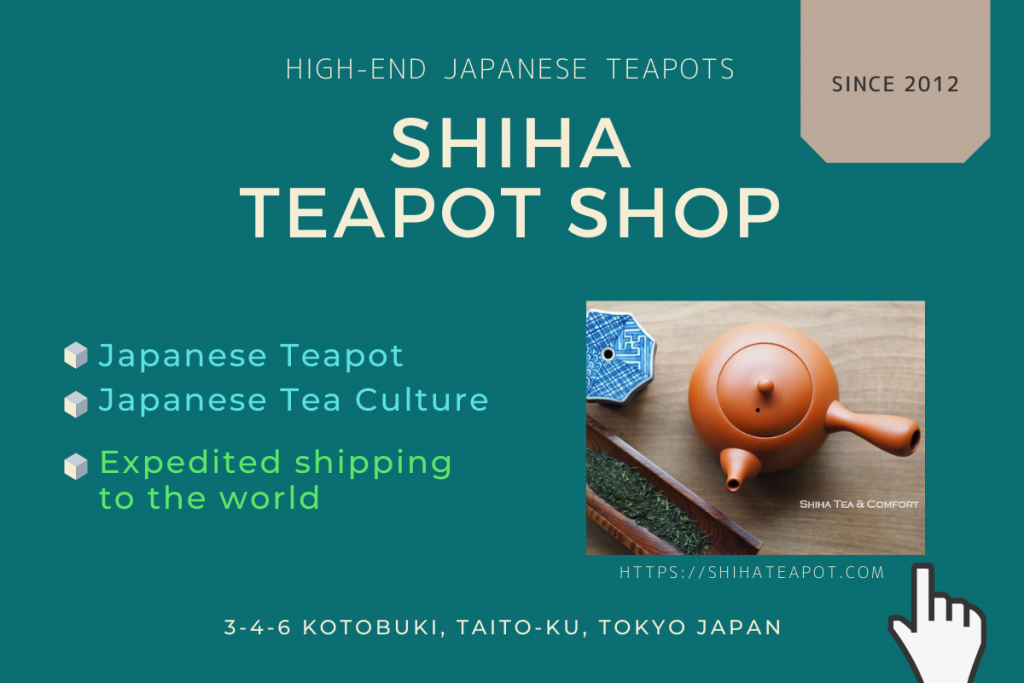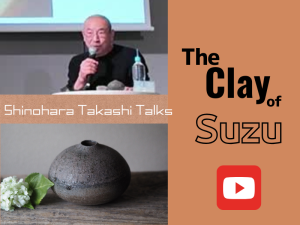The Proper Way to Pour Tea:Fill Only 70% in Japanese and Chinese Tea Culture Why 90% is Overpouring?

Japan and China share a common tea-serving tradition, which is an important part of hospitality.
A well-poured cup of tea is more than just a habit—it’s a reflection of etiquette and balance. Filling the cup to 90% may seem generous, but in reality, it is too much.
Pouring tea to 70% ensures the best balance of aesthetics, practicality, etiquette, and aroma.
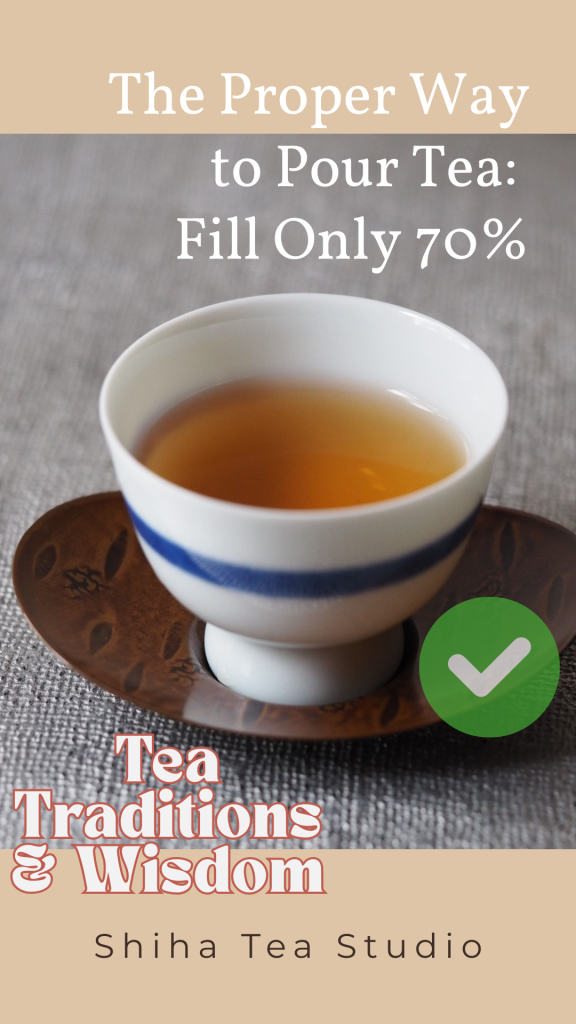
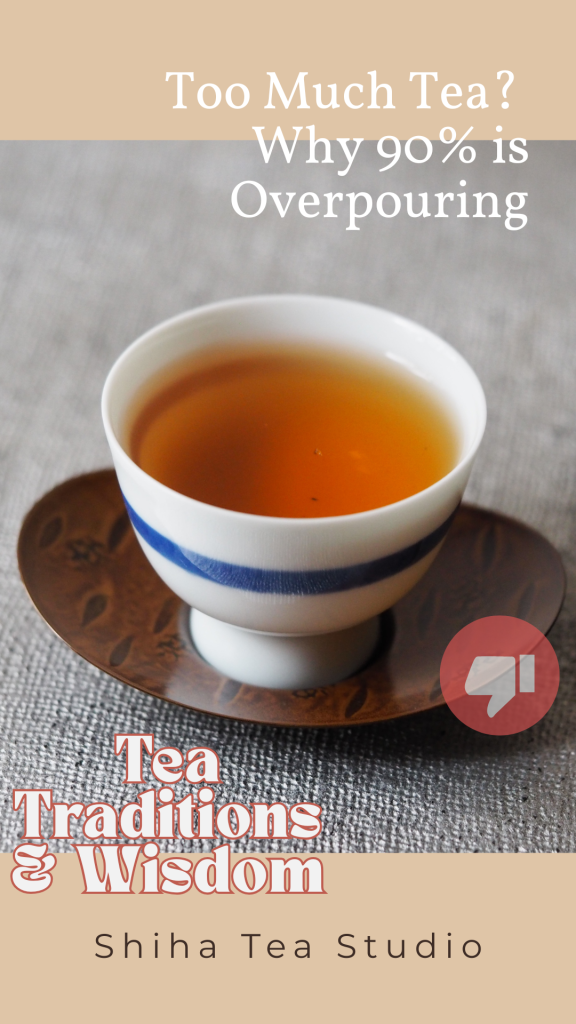
Contents 目次
How the Guests Might Feel
When tea is poured beyond 80%, guests may feel:
“Why is there so much tea?” – A sense of confusion.
“The host not know the proper way to serve tea” – A concern about etiquette.
Aesthetic Balance
A cup filled to 70% looks the most elegant and refined.
Anything beyond 80% can appear excessive and unbalanced.
Ease of Holding & Spill Prevention
A nearly full cup is harder to hold and more likely to spill.
When the tea reaches the rim, the heat can transfer to the fingers, making it uncomfortable to hold.
Hospitality & Cultural Manners
In Japanese tea culture, 70% represents a comfortable sense of space and care.
In Chinese tea culture, there is a saying:
“Fill the cup to 70%, leaving 30% is a gesture of kindness.(茶倒七分满,留下三分是人情)”
“A full cup of alcohol is respect, but a full cup of tea is an insult.(茶满欺客,酒满敬人)”
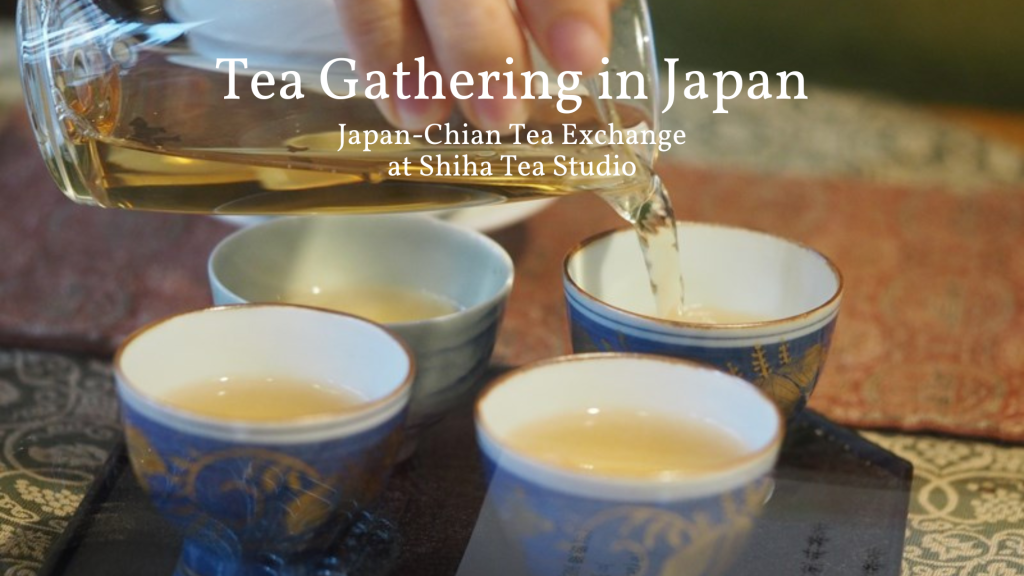
Enjoying the Aroma
Leaving some empty space in the cup allows the tea’s aroma to gently rise and be appreciated.
If the cup is too full, steam gets trapped, making it harder to enjoy the fragrance.
What If You Pour More Than 70%? (In my case)
Of course, in daily life, there are times when tea is poured slightly beyond 70%. When having tea with friends, I sometimes accidentally pour a bit too much. In such cases, I simply say, “I poured a little too much, sorry!” This small remark helps keep the atmosphere light and comfortable.
However, when serving tea to guests who are not close friends, I always make sure to pour around 70%. (In Japan, it is common to prepare tea out of the guest’s sight rather than pouring it directly at the table, which makes it easier to control the amount.)
In another case, during winter, when guests come in from the cold, I sometimes pour around 75–80% to help warm them up. In such situations, I also say, “It’s cold outside, so I poured a little extra to warm you up.” This way, the guest understands my intention as an act of kindness rather than a lack of manners, which could make them feel uncomfortable.
However, I rarely pour more than 80%.
Conclusion: The Perfect Balance
Pouring tea to 70% ensures the best balance of aesthetics, practicality, etiquette, and aroma.
But when exceptions happen, a small explanation can make all the difference in maintaining a warm and pleasant tea experience. 🍵✨

